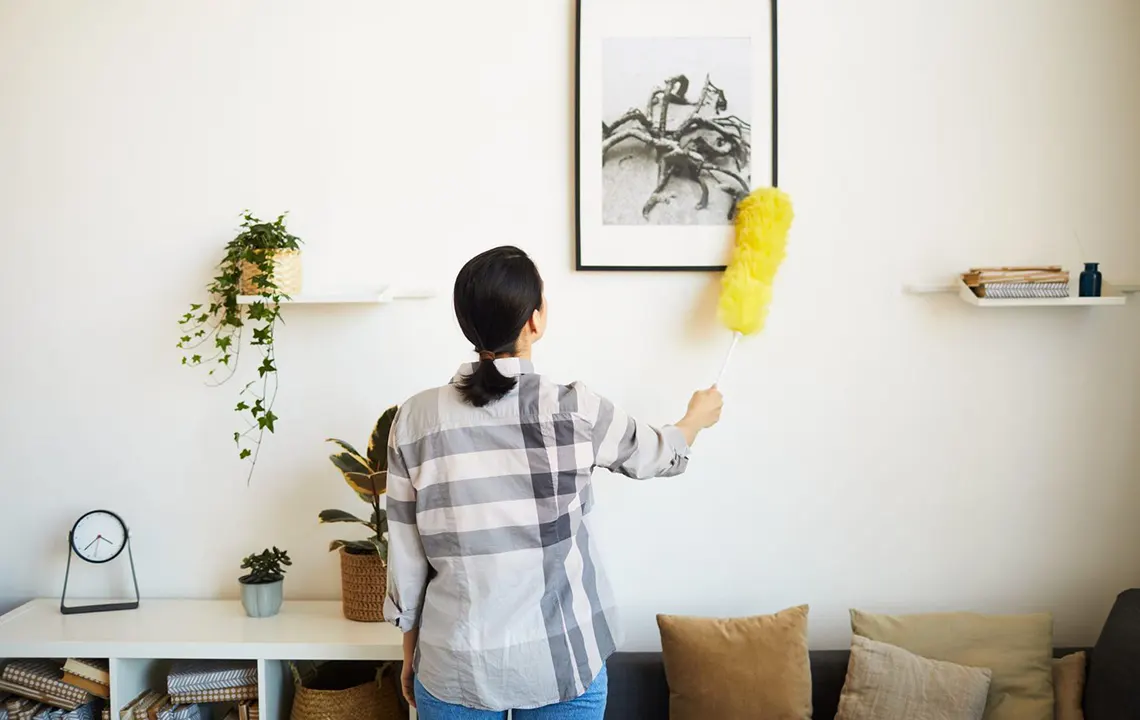We all appreciate that pristine, just-painted look—but let’s be real, daily life has a way of leaving its mark. Smudges, fingerprints, and dust build-up can quickly dull the fresh appearance of your walls. While cleaning painted walls may seem like a daunting task, it doesn’t have to be. With the right approach and a few practical tips, you can easily bring your walls back to life.
Decoding Your Wall’s Paint Type
Before you even think about grabbing a sponge, it’s essential to identify what kind of paint is on your walls. Different types of paint react differently to various cleaning methods, so knowing what you’re dealing with is key to avoiding any mishaps.
Understanding Common Paint Types
Here’s a quick guide to the most common interior paints:
- Latex/Water-Based Paint: This type is a favorite for its quick drying time and low odor. It’s also easy to clean with water. However, be cautious—latex paint is sensitive and can be damaged by aggressive scrubbing.
- Oil-Based Paint: Known for its durability and resistance to moisture, oil-based paint is tougher and can handle stronger cleaning methods. However, it requires specific cleaners and more effort to remove dirt.
You might also encounter newer types like milk paint or clay-based paint, each with unique care instructions.
How to Identify Your Wall Paint
If you’re unsure about the paint on your walls, try these detective techniques:
- Rub Test: Dampen a cotton ball with rubbing alcohol and apply it to a discreet area. If the paint transfers to the cotton ball, it’s likely latex. If it doesn’t, you’re probably dealing with oil-based or another type of paint.
- Examine the Finish: Latex paints are often available in a wider range of finishes, from matte to high-gloss. Oil-based paints typically come in satin or semi-gloss.
- Ask a Pro: Still not sure? A professional painter or your local paint supplier can often identify the paint type just by looking at it.
Why Knowing Your Paint Type Matters
Understanding your paint type is crucial to selecting the appropriate cleaning technique. Using the wrong cleaner can damage your paint, leading to streaks, scratches, or even peeling.
Cleaning Your Walls Without Damaging the Paint
Let’s dive into how you can clean your walls effectively without harming that precious paint.
Getting Ready: Preparation is Key
A little preparation goes a long way:
- Clear the Area: Move furniture away from the walls to give yourself ample space to work. If large items can’t be moved, push them to the center of the room and cover them with drop cloths or old sheets.
- Remove Covers: Take off outlet and light switch covers to clean around them more thoroughly. Clean these separately with a damp cloth and mild soap.
- Protect Your Floors: Lay down drop cloths along the baseboards to catch any drips. Secure them with painter’s tape to prevent shifting.
General Wall Cleaning
- Mix a mild cleaning solution with warm water and a small amount of gentle dish soap.
- Dampen a soft sponge or microfiber cloth in the solution, wring it out well, and gently clean the wall using light, circular motions.
- Rinse with a clean, damp cloth to remove any soap residue.
- Dry the area with a microfiber cloth or allow it to air dry.
Dealing with Stubborn Stains
- Make a baking soda paste by mixing baking soda with a bit of water.
- Apply the paste to the stain and scrub gently with a soft sponge.
- Wipe clean with a damp cloth and allow the area to dry.
- For grease stains, mix white vinegar, liquid dish soap, and warm water.
- For scuff marks, use a magic eraser, applying gentle, even pressure.
Homemade Cleaning Solutions for Walls
Prefer a DIY approach? Here are some homemade cleaning solutions that are effective and paint-safe:
Vinegar Solution
Mix equal parts white vinegar and water. This natural solution is perfect for general wall cleaning, as vinegar’s acidity helps break down dirt and grime without damaging the paint. It’s particularly effective for removing grease and light stains.
Baking Soda Paste
Combine 1/4 cup of baking soda with 1 tablespoon of water to create a gentle abrasive paste. Apply to stains and scrub gently with a soft brush or sponge. Baking soda lifts stains while being kind to your wall’s surface.
Dish Soap Mixture
Mix 2 cups of warm water with 1 teaspoon each of liquid dish soap and distilled white vinegar. This mild cleaner is suitable for most painted walls and effectively removes dirt and light stains.
Lemon Juice Blend
Mix lemon juice with water for a refreshing cleaning solution. The citric acid in lemon juice is a natural degreaser and stain remover, making it ideal for grease spots or sticky residues.
Tips for Using Homemade Solutions
- Always test your solution on a small, inconspicuous area first.
- Use soft cloths or sponges to avoid scratching the paint.
- Avoid soaking the walls, especially with flat or matte finishes.
- Rinse the cleaned area with a damp cloth and dry thoroughly.
By using these natural solutions, you can clean your walls effectively without resorting to harsh chemicals.
Using Gumption on Painted Walls
Gumption is a versatile cleaner, but you need to exercise caution when using it on painted walls.
What to Keep in Mind
- Avoid on Matte Finishes: Gumption is too abrasive for delicate finishes like flat or matte paint.
- Best for Gloss or Semi-Gloss: These tougher finishes can handle Gumption without damage.
How to Use Gumption Safely
- Test the product on a hidden area first to ensure it won’t damage the paint.
- Apply it with a damp cloth or sponge, and avoid excessive rubbing in one spot.
- Rinse thoroughly with clean water after use.
While Gumption is powerful, for general wall cleaning, it’s better to start with milder solutions like warm water and dish soap. If you do use Gumption, be sure to follow the instructions carefully.



